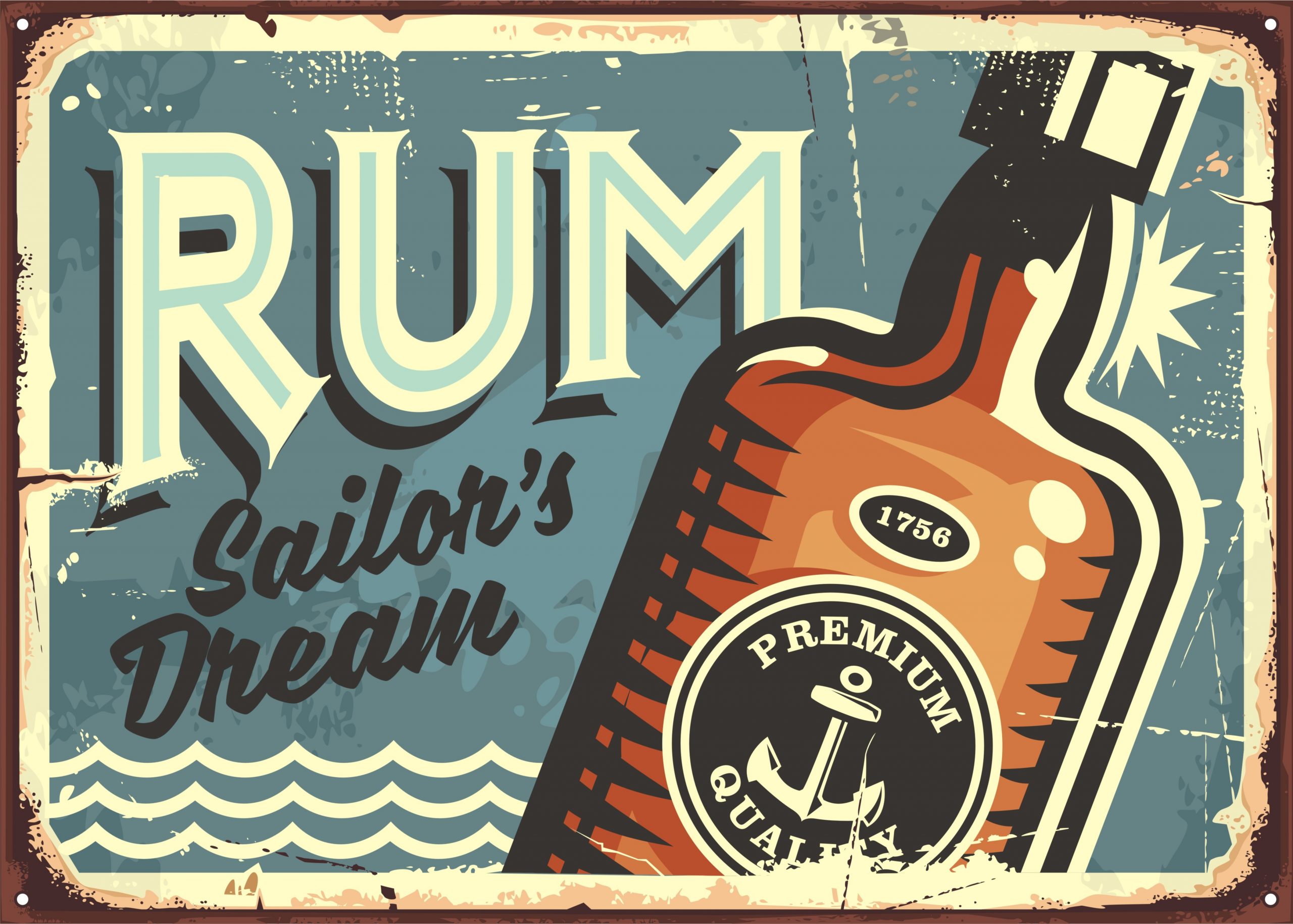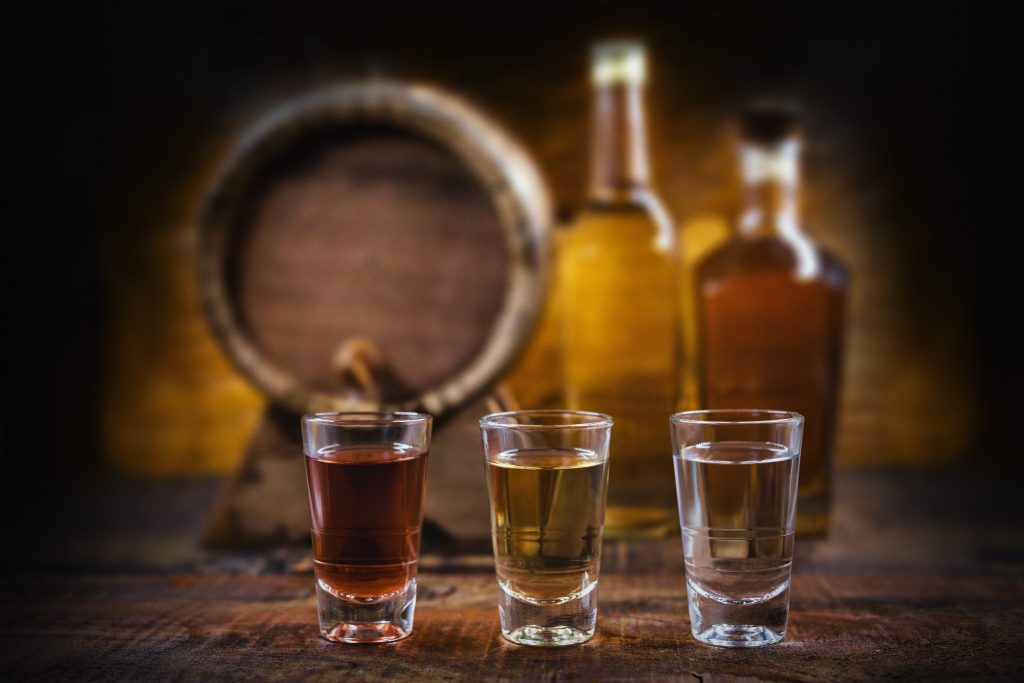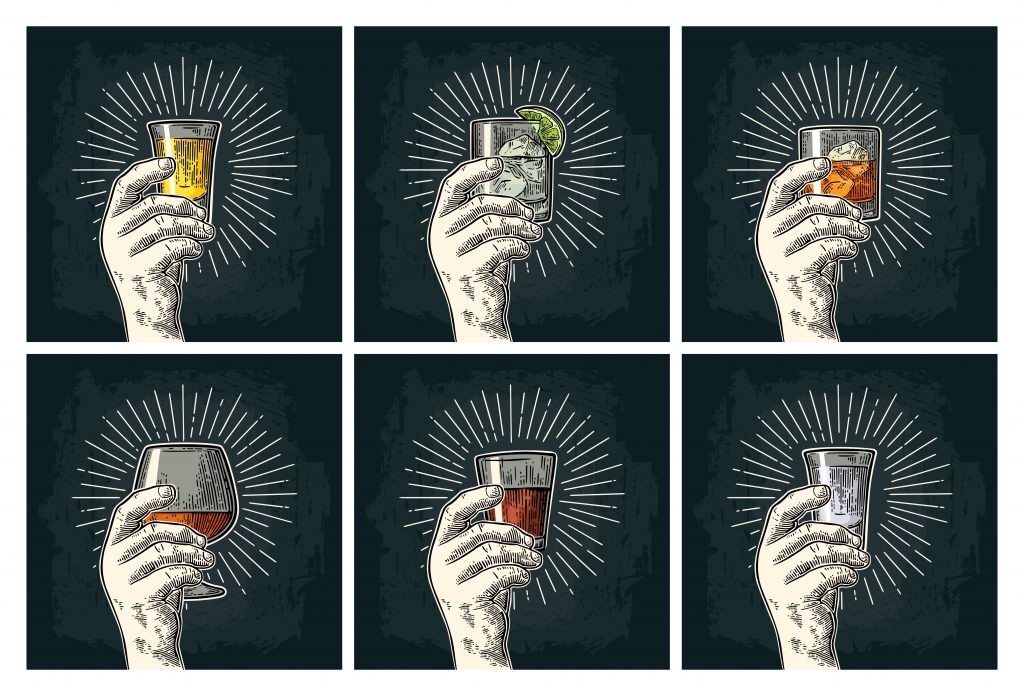
What is Rum?
It’s a pirates life for me! Rum’s connections to pirates hints back to the history of this naturally sweet spirit. Rum is just starting to make a comeback. People are beginning to discover that the spirit they drank with cola during their youth actually has a huge amount to offer.
What is it?
Rum is distilled from sugarcane, either the juices of the sugarcane plant itself or molasses, the byproduct of the sugar refinement process. More often than not this distillate is then aged in oak barrels. Whilst other spirits, like bourbon and cognac, are also aged in oak barrels the location of where rum is aged (much closer to the equator than any other aged spirit) lends it to aging much “quicker” than other barrel aged liquors. Whilst rum will often be younger than other spirits they, comparatively speaking, carry a lot more barrel flavor for their age.

The History of Rum
The origin of rum is unclear. However, there’re mentions of the consumption of fermented sugarcane juices, a drink called “shidhu,” in Sanskrit texts from India. The first mention of which dates to around the 7th century. There is also evidence that the island of Cyprus, a big producer of sugar during the middle ages, was distilling rudimentary spirits from sugarcane products around the 1300’s.
The origins of what we today call rum wasn’t distilled until the 17th century. Slaves on plantations in the Caribbean discovered that they could distill the byproduct of sugar production, molasses, into a rudimentary alcoholic beverage. It was first described as “hot and hellish.”
Despite these early opinions, rum became popular and production spread to colonial North America. In New England, people began setting up stills and producing rum. It was handed out liberally by campaigning political candidates, even George Washington insisted on having Barbados rum for his inauguration. This American love for rum quickly declined with restricted supplies from the Caribbean and the rise of American whiskey.
Rum, The Navy and Pirates
Rum was a valued commodity in the Caribbean. When the British took the island of Jamaica they had a readily available supply of rum and quickly switched their daily on-board booze rations from French Brandy to this newly available and tasty alternative. The rum kept and served on the ships was called Navy Strength and this meant that it was at least 57% ABV. This was “proof” rum, because a pellet of gunpowder soaked in anything with a lower ABV would not burn.
Navies in the 17th Century employed privateers (mercenaries with their own ships) many of whom would become pirates; most by choice, some by committing a crime against the country which was employing them. Upon becoming pirates their love of rum continued and through their piracy these people ensured that they had a continued supply of rum.

Rum’s Rules and Styles
There’re no rules for rum production and each location produces it following their own historical methods, and traditions in order to produce their own style. Rums are often categorized by where they’re produced with the products history in that region playing a big part in its flavor. For example, parts of the Caribbean, produce full flavored rums from molasses. In Brazil cachaça (usually classified as a type of rum) is produced using sugarcane juices.
Much like with rum production, the rules for the styles of rum are not steadfast, and often come from individual traditions. We have enough rum around the world to create the following style categories; sometimes called grades.
Light Rum
Also called “silver” or “white” these rums are slightly sweet with few other flavors. Despite their appearance they have been aged, but filtered to remove any coloring. This filtration also removes many flavors.
Gold Rum
The middle point between light and dark rum. These rums have usually seen a bit more aging than light rums and are often left unfiltered. This gives them more flavor and body, but not quite as much as dark rum.
Dark Rum
Defined by color these rums are usually made from caramelized sugar or molasses. Dark rum sees much more time in barrels than their lighter counterparts. Dark rum has stronger and more intense flavors than light and gold rum, the flavor of the sugar or molasses still power through the barrel flavors.
Spiced Rum
Spiced rum often uses gold rum as their base and is flavored with the addition of spices such as pepper, cinnamon, cardamon, cloves and anise, among others. Caramel coloring is commonly added to these products.
Over Proofed Rum
Now only used in drinks, these potent products are becoming harder to find in the USA. However, their production has not been damped by this. They are usually gold in color and the lower ABV limit is 57%, with some going as high as 75.5%!






Write a Comment